How to Start a Bullet Journal and Master Your Productivity
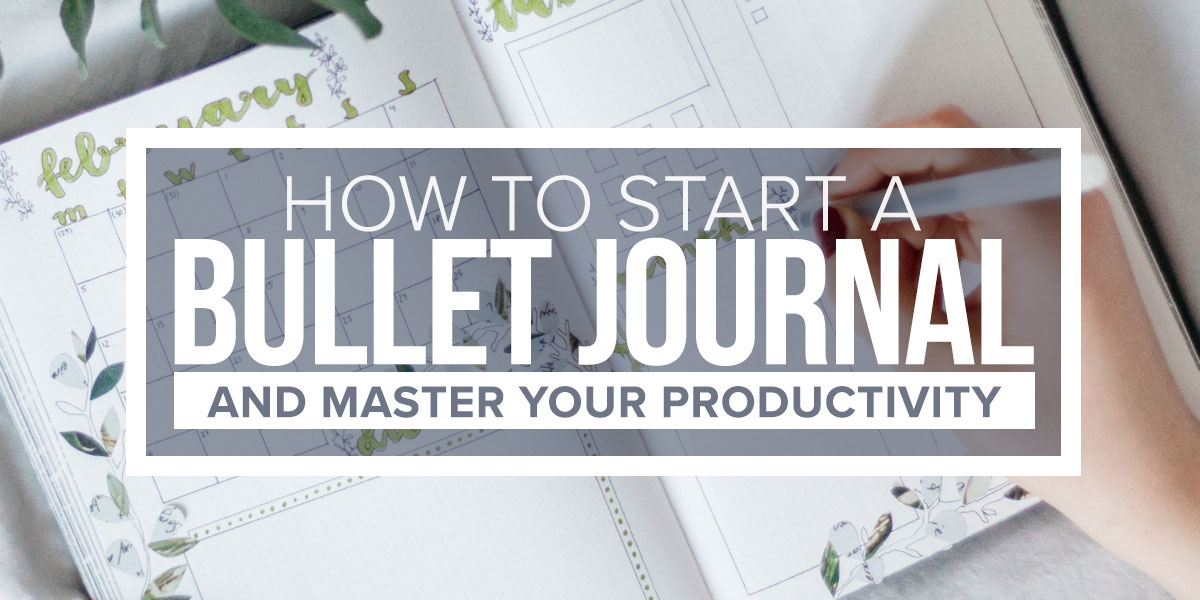 As someone who is obsessed with mastering my time and productivity, I can’t emphasize the benefits of starting a bullet journal enough. A bullet journal is a paper journal, but it’s also a planning tool. Thanks to the system of migrating tasks, it’s a powerful goal-setting method as well.
As someone who is obsessed with mastering my time and productivity, I can’t emphasize the benefits of starting a bullet journal enough. A bullet journal is a paper journal, but it’s also a planning tool. Thanks to the system of migrating tasks, it’s a powerful goal-setting method as well.
 When you start a bullet journal, you’re essentially wrangling all the bits and pieces floating around in your head (and on post-it notes around your desk). You’re setting priorities and creating a deliberate, practical action plan. You’re able to track your status and know your next step each day. Bullet journals offer clarity and focus.
When you start a bullet journal, you’re essentially wrangling all the bits and pieces floating around in your head (and on post-it notes around your desk). You’re setting priorities and creating a deliberate, practical action plan. You’re able to track your status and know your next step each day. Bullet journals offer clarity and focus.
The concept that really sealed the deal for me on bullet journals was the system of migration. With bullet journals, you roll over, or “migrate” unfinished tasks each period (weekly or monthly). This methodology quickly helps you keep track of what’s on your plate at any given time.
The other feature I love is an index as page one of the journal. It’s searchable and convenient. Again, it’s such a simple solution, but that’s the appeal of bullet journals—they seem stupidly simple, but they’re incredibly useful.
Simple, but genius! That sums up bullet journaling.

Finally, there’s no understating the convenience of paper. Now, I know the trend these days is toward cutting back on paper and going digital whenever possible. I agree with this idea for the most part, as well. I’ve digitized much of my “paper life,” and it’s been beneficial for organizing. BUT a few weeks ago, Google Calendar went down. I logged off my computer and stopped working for the day. There was no way to know what I was doing, and that’s where paper wins—paper can’t “go down” like the internet.
There are many additional reasons to start a bullet journal as well. This is a great productivity system. Here are all the details you need to know to start a bullet journal and take control over your to-do list.
Why Bullet Journals Work So Well

I had to know more about this super-efficient notebook system. I asked a lot of questions: What was a bullet journal, and how did it work? How should I start a bullet journal? Most importantly, would a bullet journal actually increase my productivity and help with organization, or was it a pretty way to doodle (and waste time)?
As many of my readers know, I’m a big fan of any tool to organize the chaos of everyday life and bring a minimalist mindset to work. Bullet journals are no exception.
I’ve explored a lot of productivity concepts, time management, and planning activities. Anyone who’s hoping to follow a minimalist approach to their schedule (cutting out the chaos, clutter, and stress) has probably looked into many of the products and ideas like the Pomodoro method, daily planners (like the Franklin-Covey system or the Happy Planner system), and digital tools like Trello, Basecamp, and Asana. There is no shortage of ways people try to tame the chaos in their lives.
While most of these productivity tools have pros and cons, I’ve found there are positive takeaways and lessons in each one. The main idea of any efficiency tool is organizing your time and taking control of your schedule.
 Chaos, stress, clutter, and confusion all stem from a lack of priorities. Minimalism is the counterfoil to chaos because it’s all about aligning your life to your priorities.
Chaos, stress, clutter, and confusion all stem from a lack of priorities. Minimalism is the counterfoil to chaos because it’s all about aligning your life to your priorities.
Do you know your priorities? Do you know where you’re going? Do you know how you want your future to look? Clarifying these questions and distilling down the solutions help you move in a productive direction toward the life you want. Bullet journals offer you a simple, clear road map to your destination.
The most appealing aspect of the bullet journaling process for me was the process called migration. One of the biggest problems with other productivity methods is the lack of a way to carry tasks forward. With digital calendars and apps, you check off a task and forget it, or you keep mindlessly rolling it forward and changing the date. With a paper list or planner, you turn the page, and it’s gone.
The idea of migrating tasks is shockingly simple at face value, but from a practicality standpoint, it makes a HUGE impact and is a big deal for me. Writing down each task reinforces your dedication when you migrate them forward. You are thinking about what you’re doing, and you’re solidifying the importance.
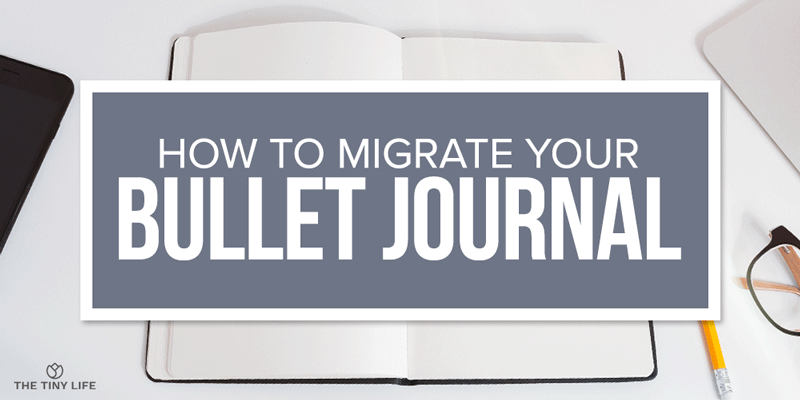
The other aspect of bullet journals, that I liked was the index. As I said, when Zach showed me his index, it was one of those “ah-ha” moments. I’d avoided the idea of a paper planner or journal because it seemed there was a lack of searchability (unlike digital tools). You must flip through every page to find your notes. The index feature of a bullet journal provided an analogue, but still effective solution to my hang up with paper journals.
The paper aspect of a journal is nice too. Paper is convenient; you can take it anywhere. There’s something very intentional and deliberate about writing by hand. You think of what you’re jotting down. You write it with purpose. If the bullet journal system resonates with you, I think you’ll find the paper factor is a pro rather than a con.
Since bullet journaling seemed to work so well for Zach, I figured I’d give it a try, so I jumped in and learned how to plan and organize my life with the bullet journal method. I researched bullet journals further and was blown away by the amazing and artistic spreads and layouts, interesting collections, and the system itself.
What is a Bullet Journal (and How Does it Work)?
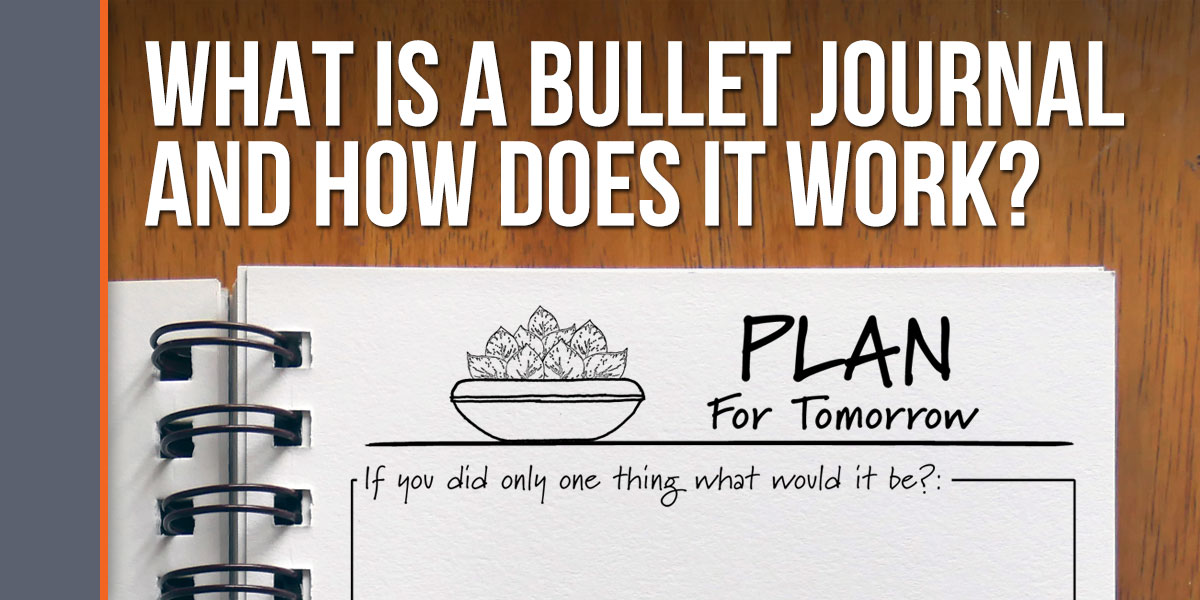
There are central components to a bullet journal:
- Index
- Key
- Spreads
- Calendar/Future Log
- Collections (projects)
We’ll go into the definition for each of these components, but it’s important to realize there is a lot of internal jargon and lingo when it comes to bullet journaling. These terms may seem intimidating or off-putting at first, but let me assure you, the components and actions are actually straightforward and practical.

In addition to the basic components, there are many different collections/projects people like to include:
- Habit trackers – Meals, workouts, moods, and more…
- Brain dump or mind map sheets
- Goal sheets
- Lists – Books/movies/podcasts, travel, shopping
- Schedule or agendas
- Plans for meals or workouts
- Inspiring quotes
- Vision boards
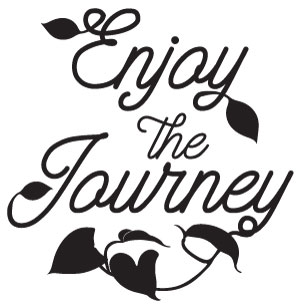 As you see, there are endless bullet journal ideas out there. The bullet journal layouts vary for each collection. After viewing so many bullet journal ideas on Pinterest and Instagram, I have to say there are very talented artists out there! The aesthetics of bullet journals was one of the aspects that really appealed to me personally. They’re small works of art for some avid bullet journalers.
As you see, there are endless bullet journal ideas out there. The bullet journal layouts vary for each collection. After viewing so many bullet journal ideas on Pinterest and Instagram, I have to say there are very talented artists out there! The aesthetics of bullet journals was one of the aspects that really appealed to me personally. They’re small works of art for some avid bullet journalers.
But again, it’s easy to get caught up or intimidated by beautiful layouts and designs. You don’t need art skills to create a bullet journal. Many of the signifiers (symbols used to indicate the status of items on your log) are simple: a star, a checkmark, a box, or a greater than/less than symbol. You don’t need to be a calligrapher or designer to create an aesthetically pleasing bullet journal.
Better still, there are many bullet journal printables and pre-designed layouts to help you get precisely the look at features you need—no artistic talent required!
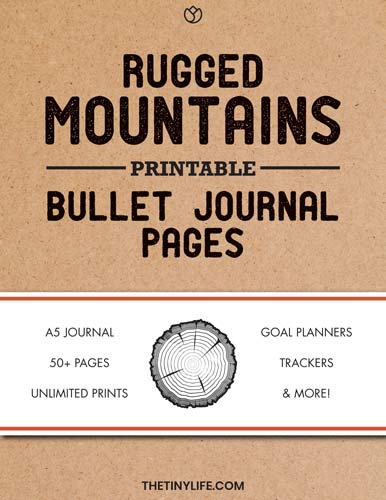
Bullet Journal Printables
Get a head start on your bullet journal and do it in style with these printable designs.
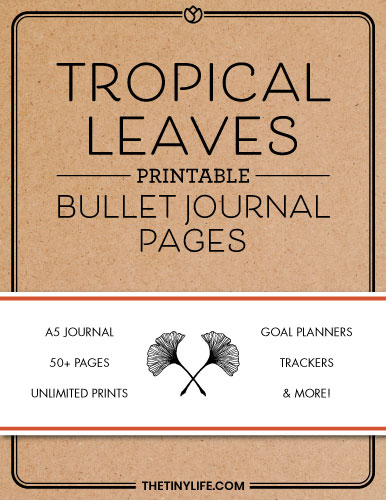
Basic Terms of Bullet Journaling
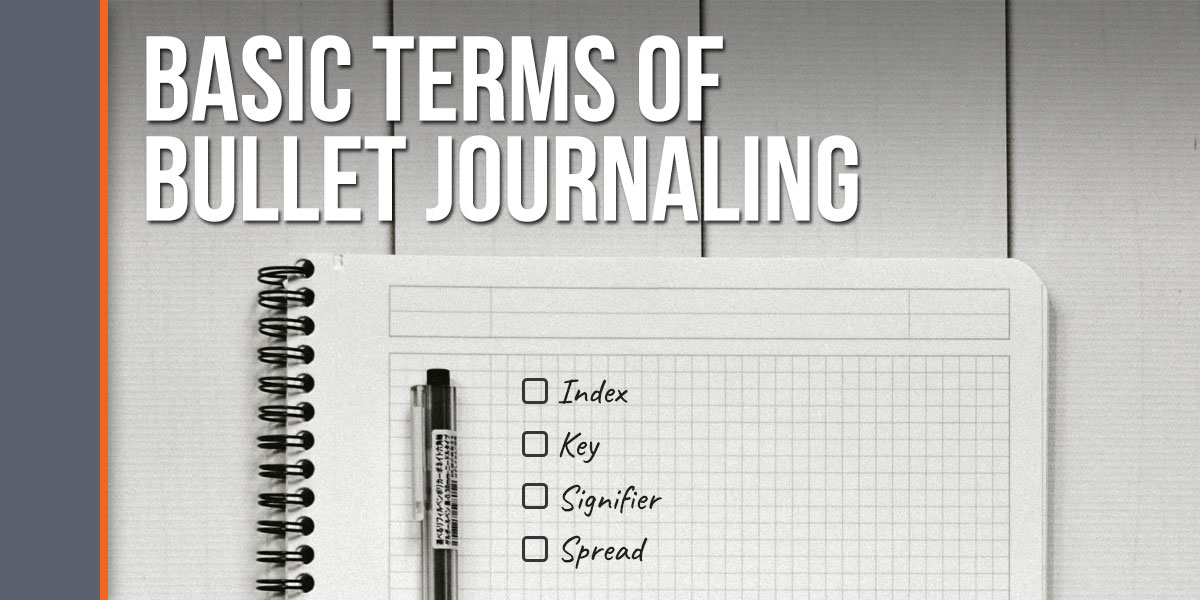
- Index: This is the first page of your bullet journal. Each subsequent page gets a number and is logged in the index. With a quick check, you’ll find each piece of information at a glance.
- Key: Like the key on a map, your bullet journal key breaks down the symbols (signifiers) and colors you will use to indicate the status of your projects. Most people like to put the key in the front (or in the very back), so it’s easy to reference.
- Signifier: Signifiers are the symbols indicating the status of each task. Usual signifiers include a square (for a checkmark when complete), a > (meaning a migrated task), a < (meaning a scheduled task), a – for a note, and a * for priority. Customize signifiers to whatever makes sense to you.
- Spread: A two-page overview of the month. The left side contains the dates, usually written as a numbered list. The right page contains your tasks/to-dos for the month. Some people prefer a weekly spread.
- Daily Log: The heart of your bullet journal, your daily log is used to write down bullets (rapid logging) each day. You enter multiple days on a page. The topic is the date (or dates) on the page.
- Collection: Each page in the bullet journal has a topic, and those topics are referred to as collections. Every entry in your bullet journal, whether it’s a project, list, or tracker, is called a collection. You may have several collections aligned with the tasks on your monthly spread.
- Future log: The future log is essentially a calendar where you will add your future tasks. You consult your future log when you set up your spread each month (or week).
- Migration: When you set up your spread, you’ll migrate the incomplete tasks/to-dos from the right page of your last spread. The migration system ensures you never lose track of what you’re doing. Migration also really sets your intention for the next period.
- Dot Grid: Many bullet journal users journals with dot grid pages. These dot grids are useful for tracking habits and to-do items. For example, each day you work out, you may fill in a square on the grid (or a line segment) to show your progress.
- Doodles: While this isn’t necessarily a specific term for bullet journaling, many journals feature themes, doodles, or drawings. They’re often very beautiful with different motifs used throughout the journal. Many people find a beautiful journal is more motivating.
How to Start a Bullet Journal
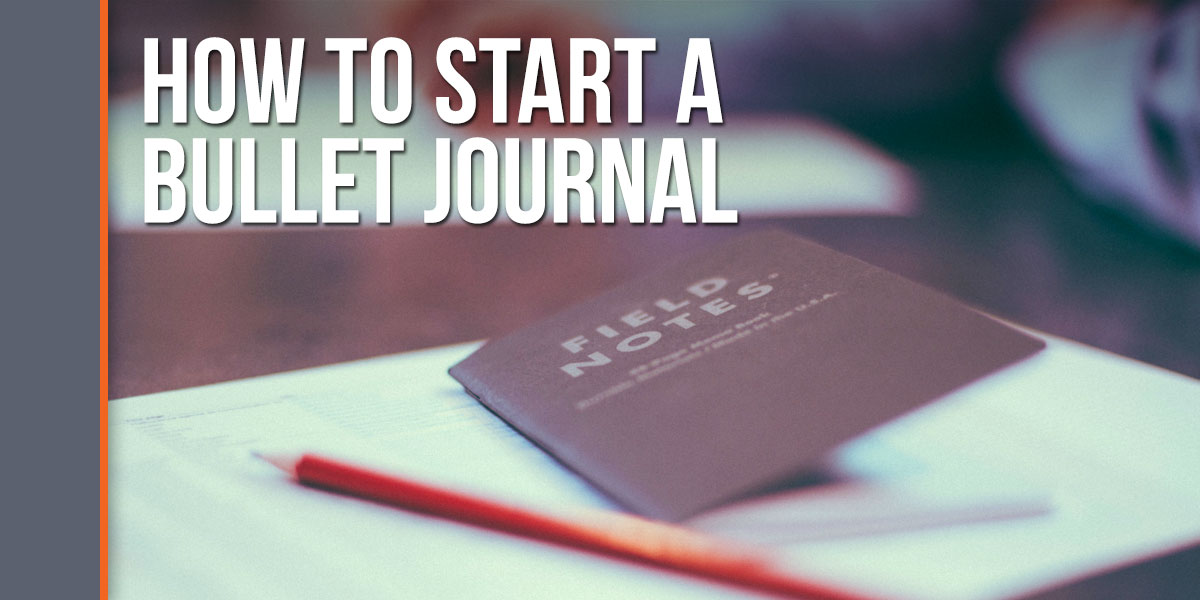

You’ll want to set up your future log next. This is a year-long calendar (usually set up with space between each month, covering 2-4 pages). In this log, you’ll add significant dates like vacations, holidays, birthdays, conferences, etc. Think of your journal as working from the broad to the specific, starting with your bigger goals and planning, then as you get deeper into the journal, you get down to the nitty gritty of weeks or even daily spreads.
You may want to leave a few pages to set up various collections as you go. You don’t need to set up your collections anywhere in particular, but some people like to put them in the front of the journal. These include lists like your bucket list, books, movies, podcasts, and more. You could add your goals, meal plans, and other collections here as well.
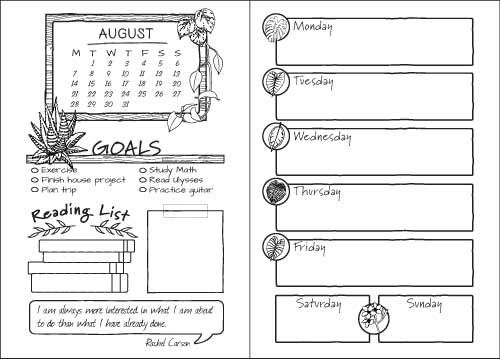
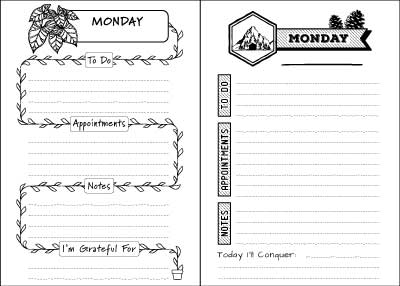

Thanks to the rapid logging and signifiers, the process is quick and efficient. Scan through a bullet journal very fast and know precisely the status of every item.
There’s no dogma to bullet journaling either. Similar to minimalism or living the tiny life, there are guidelines, but the process is entirely up to your interpretation. Find the ways bullet journaling works for you. Start simple, adjust as you go, and incorporate new ideas and new collections as you become more comfortable with the process.

Keep in mind, you WILL make mistakes (we all do). This bullet journal is for your personal use. There’s no way to really “mess it up” or ruin your journal. If you’re worried about aesthetics, you may want to invest in whiteout or use erasable pens before you go out and buy calligraphy markers (which are in no way a requirement for bullet journaling).
You’ll also want to remember this is your journal! Use it to make notes, jot down reminders, and make notations. The power of a bullet journal is that you can refer back to it for years and years.
Using a Bullet Journal to Manage Projects

Where bullet journals really shine is as a project management tool. While bujos are also a useful tool for goal setting and getting organized, I find the method is also very useful for projects requiring step-by-step action.
For example, when setting up land for a tiny house build, a bullet journal is a highly effective way to manage all the lists, to-dos, and planning.
As you see, the bullet journaling process helps you organize and keep track of moving pieces. You’ll know the status of every part of the project. Easily adjust timelines and plans accordingly, add to the lists and refer back as needed.
Bullet journals are practical because they give a home to all the moving pieces you’re tracking. You no longer need to hold everything in your mind, jot it down on sticky notes, or access an app to remind you of the status. It’s all right there in your organized bullet journal.
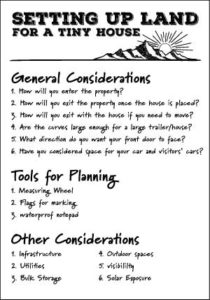
If you’re looking for a way to organize information clearly, keep track of your day-to-day activities, or get serious about your goals, I highly recommend bullet journaling. It’s a beautiful way to keep track of your life!
Your Turn!
- What’s your favorite method for goal setting and tracking?
- What do you like about the idea of using a bullet journal?

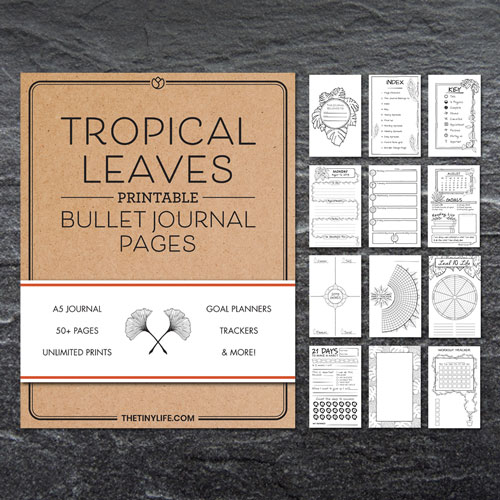
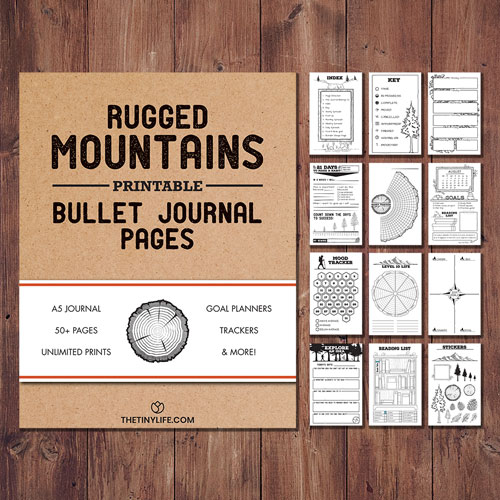

Like any system, also BuJo is depending on discipline.
It’s not a miracle system!!
If you’re not intend to spend time on it, don’t start with it.
All the people with fancy looking BuJo’s, you see in Pinterest, I always wonder how long they will last with it.
I use the BuJo method already many years, in a very simple way, but still depend on my Macs (and the rest of the Apple stuff) to manage myself.
Makes me laugh the concept has been around more than a century. I’ve been using one since the 70s. Journaling is as you say for yourself no one else. Bullet journaling for this time may help those who haven’t yet experienced a internet/computer set back or those who worry about hackers. It’s also a very affordable place to start tracking.
I have never heard of “journaling” like this. (When I hear journaling, I think of something a psychiatrist assigns to do with feelings. Ugh.)
I started making notes in college. I never had to do that in high school, so when I was complaining to Mom, she suggested I start taking notes. Who knew! I have made notes for decades, but this form of journaling takes it to a whole new level. And I like the idea of the low-tech paper journal to carry around in my purse. Hubby and I still have flip phones (we tried Smart phones and went back to flip. Too expensive and way too sensitive.) and use our laptop @ home (never in public).
Every generation adapts the same information and activities to their needs… the Bullet Journal is the same. (I think the word “Bullet” became too rough for this world, so “Bujo” was born… it is much better in a gun-controversy society.) I am so impressed by some of the YOUTUBE videos I have taken the time to view… I am amazed. I use to start journals and then destroy them because I didn’t want anyone to someday find them 🙂 — but this is different. This is self-improvement and memories and remembering your life for when you get old… and maybe for your kids and grandkids if you make one for that. For myself, however, I made a spreadsheet into a page of dots to print and put in a regular notebook. I am working toward getting the sets of template things to work out some page designs for my goals and habit trackers. I think they are one of the best ideas I have seen. I could never afford the PLANNERS that exist, so I can see why some people think it’s been around forever. I would disagree… this is a unique take on Journaling and Planners. Your pre-designed pages are confusing to me… they would need to go in a regular notebook, right? You can’t download a real book. I wasn’t sure what you intended. — I don’t seem to be able to print from my downloads right now, so I wouldn’t go for it… also, I am already on your mailing list… which is how I linked to your articles…indirectly. 🙂 I hope your readers try watching the videos on YouTube before they reject the concept. It has made Bujo-ingone of my goals.
I found this page quiet interesting i m so thankful for this.Please keep posted this kind of content i am also looking for them. You can also check our blog Morning Meditation
Much of this is what I already do in my planner (Dated Moleskine with the week on one side, lined page facing, fits in my purse.) And bullets on a daily to-do list, if it’s too long to fit in the planner. But the INDEX is genius — will save me SO MUCH TIME looking back for “collections” that I need to reference. Sometimes I use tabs, but after a few, you forget what each is for.